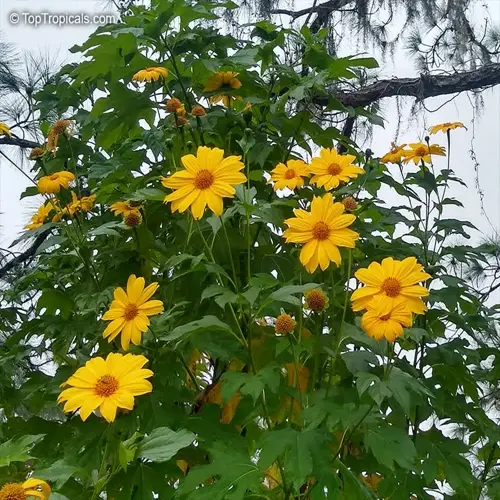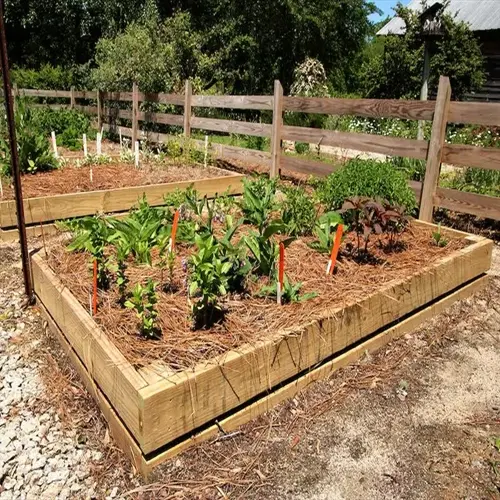When to Plant Wildflowers: Ultimate Guide

Written by
Michael Sullivan
Reviewed by
Prof. Samuel Fitzgerald, Ph.D.The timing of planting wildflowers is contingent upon your climate and the seasons in your area.
Spring is the best time to plant in most areas and typically after your last frost to provide the best conditions for germination.
Fall is the ideal time for planting because the cold of winter will create a natural seed stratification cycle.
Soil temperatures can dictate the planting windows accurately, as different species require different thresholds.
Native wildflowers are preferable because you can plant when the species are in-sync with your local ecological patterns.
Do not plant in the summer except in arid areas where the monsoon season will create moisture.
Article Navigation
Wildflower planting time determines whether your garden comes alive or remains empty. I learned this after my first failed attempt at the meadow. Do it right and you can expect bees, butterflies, and hummingbirds every day. Do it wrong and weeds take over. The first step to your wildflower success is knowing your frost dates and soil types.
Wildflowers offer you autonomy. Once established, they require no fertilizer, occasional supplemental watering, and no mowing weekly. My neighbor still toils away over his lawn while my native blooms sustain themselves. Select regional seeds, match them to local soil, and watch the magic show begin.
Your place determines everything. Coastal gardens plant later than mountain valley gardens. Clay soils drain more slowly than sandy soil. I lost lupines because I ignored my zone. Annuals like poppies bloom quickly and with gusto, then die out. Perennials like milkweed thrive with legacy. This adaptability means you can prosper in nearly any location.
Choosing the Right Wildflower Seeds
Selecting native wildflowers creates a habitat garden. I once planted some eye-catching, non-native flowering plants and learned my lesson. They looked beautiful, but nothing attracted to them. For example, purple coneflower provides food for caterpillars and bees that are adapted to your area. These native plants have evolved in harmony with the local soil and weather, so there is little to no need for excessive care.
Know bloom timelines before buying seeds. Annuals like California poppies splash color in 6 weeks but don't last more than a season. Perennials like milkweed take a year to establish themselves, but return each spring more vigorous than the previous year. I like to combine both for immediate impact and a lasting legacy. This blend enables me to keep my meadow brimming with life from frosts in April to frosts in October.
Stay away from pretty pictorial mixtures, unless you want a one-season wonder. These colorful packets typically contain invasive species that outcompete the native ones. I learned this the hard way when bachelor buttons killed my black-eyed Susans. Keep in mind to always check your seed labels for origins and ensure they're regionally sourced. Most extension offices maintain a list of suppliers for native plants, which are considered safe sources.
Investigate each seed packet as if it were a crime scene. Certain packets of seeds contain invasive hitchhikers, such as cheatgrass, which annihilates local ecosystems. I only purchase certified, locally grown seeds with botanical names. Search for terms like 'wild-type' or 'open-pollinated' for genetic diversity purposes. This protects your garden and the surrounding natural wild lands.
Native Species Advantages
- Native wildflowers support local pollinators like bees and butterflies effectively
- These plants require less water and resist regional pests naturally
- Verify seed origin with suppliers to ensure true native species
- Prioritize locally adapted varieties for higher survival rates
Avoiding Invasive Risks
- Check seed labels for invasive species warnings before purchasing
- Research plant characteristics through local agricultural extensions
- Non-native species can disrupt ecosystems and spread aggressively
- Choose certified seed sources with clear provenance documentation
Climate Adaptation
- Select drought-tolerant species like blanketflower for arid regions
- Choose cold-hardy varieties such as aster for northern climates
- Match plant requirements to local rainfall patterns and temperature ranges
- Consider microclimates in your garden for optimal placement
Soil Compatibility
- Test drainage by observing water absorption after rainfall
- Acid-loving species like lupine thrive below pH 6.5
- Alkaline-tolerant plants including yarrow prefer pH above 7.0
- Avoid heavy clay soils without amendment for most wildflowers
Bloom Duration
- Combine early-bloomers like poppies with late-season coneflowers
- Perennial species typically flower for 4-6 weeks annually
- Annual varieties often bloom continuously until first frost
- Stagger planting times for extended seasonal color displays
Preparing Soil and Sowing Techniques
Wildflowers prefer poor soil, which is quite different from a common garden plant. I discovered this when I attempted to add compost, and weeds took over the entire area. Wildflowers evolved in low-fertility conditions and do not need fertilizer. If the soil is too nutritious, remove it. Test the soil for drainage. This can be done by pouring water on the soil and testing to see how long it takes for the water to be absorbed. It should take less than one hour.
Take advantage of the ability to combat weeds using the stale seedbed method. method.The recommended practice is to clear the area of mulch and wait two weeks to allow any weed seeds to germinate. At that time, you can use a sharp hoe to cut the weeds off at the soil level. I have found that this one small step saves you a lot of future/timely struggles. You can repeat this process if you notice new weeds before planting your wildflower seeds.
Combine seeds with sand, as ifsalting soup. I use a 1:8 ratio, one cup of seeds to eight cups of sand. I also use pale sand, so it shows me where the seeds end up. When using it in larger areas, it's wise to divide the mixture into two buckets. Scatter the mixture walking north-south and then throw east-west for complete coverage.
Lightly but firmly press the seeds into the soil. For small spots, I walk on them in flat shoes. My meadow required a water-filled roller to create contact without burying. Never bury the seeds; they need sunlight to germinate. You can periodically check by setting aside a sample of soil. Seeds should be right on top of the surface.
Clearing Vegetation
- Remove existing grass and weeds completely to expose bare soil using manual tools like hoes or sod cutters for smaller garden areas under 500 sq ft
- Employ solarization with plastic sheets for larger weed-infested zones by covering soil for 4-6 weeks during hot summer months to kill weed seeds
- Allow cleared soil to rest for 1-2 weeks before sowing to enable any remaining weed seeds to germinate for easy removal
Soil Fertility Control
- Avoid compost or fertilizers that encourage competitive grass growth which can choke out delicate wildflower seedlings in their early stages
- Test drainage by pouring water: ideal absorption occurs within 1 hour for most native wildflower species preferring well-draining conditions
- For rich soils, remove top 3-6 inches (7.6-15.2 cm) of topsoil to create the nutrient-poor environment wildflowers naturally thrive in
Drainage Optimization
- Identify pooling areas after rainfall and amend with coarse sand or grit if needed to improve water movement through heavy clay substrates
- Create slight slopes (1-2° incline) using rakes for water runoff in flat spaces to prevent root rot in moisture-sensitive species
- Container gardens require drainage holes and a 1-inch (2.5 cm) gravel layer beneath soil to mimic natural meadow drainage conditions
Surface Preparation
- Rake soil to create fine, crumbly texture for optimal seed-to-soil contact which significantly improves germination rates across all species
- Level uneven patches to prevent water accumulation that could drown seedlings or wash away carefully distributed seeds
- Compact soil lightly with feet or roller before sowing to create micro-crevices where seeds can settle while still receiving light
Weed Prevention
- Implement stale seedbed method: wait 2 weeks after clearing for weeds to emerge then remove manually before sowing wildflower seeds
- Use yellow rattle seeds at 0.5g/m² to naturally suppress grass growth through parasitic root relationships in established meadows
- Apply thin straw layer only on slopes over 15° to stabilize seeds while still allowing 50% light penetration for germination
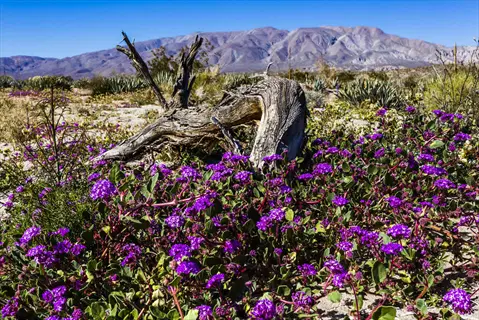
Seed-Sand Mixing
- Combine seeds with dry builder's sand at precise 1:8 ratio in large buckets to ensure even distribution and prevent wasteful clumping during scattering
- Use pale-colored sand to visually track coverage density and identify missed areas especially when working on large-scale meadow projects
- Opt for coarse-grain horticultural sand rather than fine play sand to maintain separation between tiny wildflower seeds during mixing
- Pre-mix batches in advance but store in dry conditions to preserve seed viability until sowing conditions become optimal
- Calibrate sand-seed mixtures using measuring cups for consistency across different planting zones within the same meadow
- Add natural dye to sand temporarily if working on dark soils to enhance visibility of distributed seed patterns
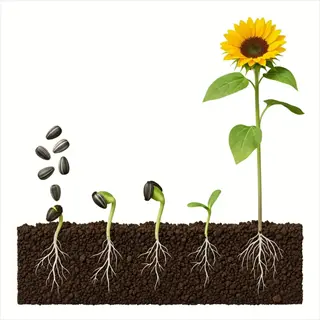
Directional Sowing
- Divide seed-sand mixture into two precisely equal portions using scales to guarantee consistent coverage density across the entire planting area
- First pass: walk north-south while broadcasting seeds in smooth arcing motions maintaining steady pace for uniform dispersion
- Second pass: walk east-west covering identical ground to fill gaps ensuring overlap patterns create complete double-coverage
- Use grid markers with strings for large areas to maintain straight paths and consistent application rates throughout sowing
- Adjust throwing height between 3-5 feet (0.9-1.5 m) depending on wind conditions to prevent seed drift beyond target zones
- Practice technique on paved area first with colored sand to perfect sweeping arm motions before live planting
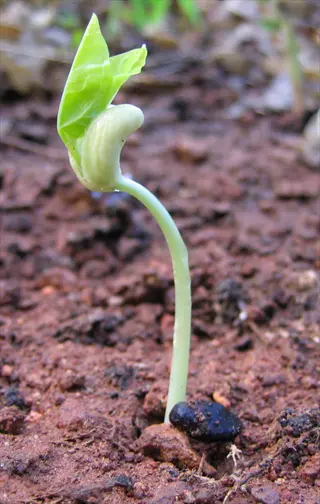
Seed Compression
- Press seeds into soil using flat-soled shoes on small patches applying gentle pressure to embed without burying deeper than 1/16 inch (1.5 mm)
- For medium areas: use 4x4 ft (1.2 m) plywood sheets walked across surface distributing body weight evenly for consistent contact
- Large meadows require tow-behind seed rollers filled with water to achieve ideal 5-10 psi compression across entire surface
- Never cover seeds with soil as most wildflowers require direct light exposure to trigger germination processes effectively
- Check compression depth by brushing aside soil samples to verify seeds remain at surface level after rolling or tamping
- Time compression immediately after sowing to prevent birds eating exposed seeds before soil contact is established
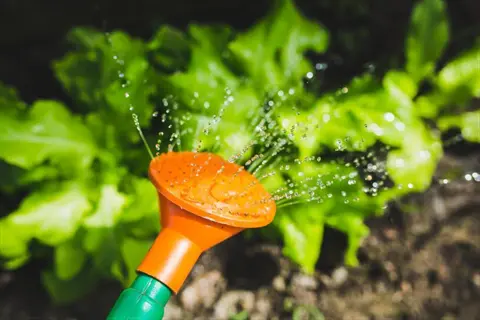
Watering Protocol
- Initial soak: use fine mist nozzle to moisten top 1 inch (2.5 cm) without creating puddles that could displace carefully placed seeds
- Maintain damp soil for 4-6 weeks until seedlings reach 6 inches (15 cm) using moisture meters to monitor at root level
- Water early morning between 5-7 AM to reduce evaporation losses while allowing foliage to dry before nightfall prevents disease
- Install timer-controlled sprinklers with rain sensors to automatically maintain consistent moisture during establishment phase
- Measure output using catchment cans to ensure 1/4 inch (6 mm) daily application meets needs without waterlogging young roots
- Gradually reduce frequency after week 6 to encourage deeper root development that accesses natural groundwater reserves
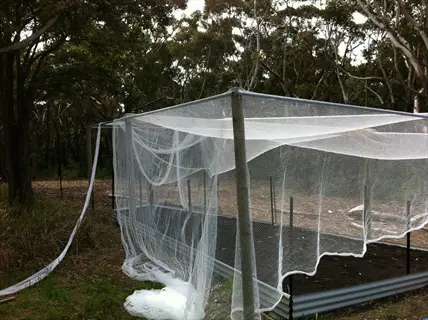
Bird Protection
- Cover newly sown areas with UV-stabilized mesh netting suspended 6 inches (15 cm) above soil on flexible hoop structures
- Secure netting edges with soil staples every 3 feet (0.9 m) to prevent wind displacement while allowing rain penetration
- Remove protection once seedlings establish first true leaves at approximately 3-4 weeks when they become less appealing to birds
- Alternative deterrent: install reflective tape strips that create flashing light patterns frightening birds without physical barriers
- Supplement with decoy predators like owl statues moved daily to maintain effectiveness in large-scale plantings
- Create sacrificial feeding stations with cheap seeds away from planting zones to distract birds during critical germination
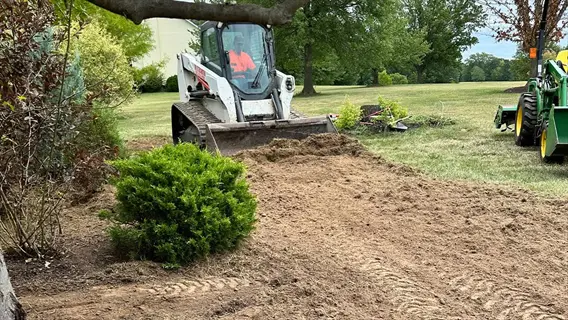
Slope Stabilization
- Apply biodegradable coconut fiber blankets on inclines over 15° anchored with landscape staples every 12 inches (30 cm)
- Use jute netting secured with wooden stakes every 3 feet (0.9 m) creating grid patterns that hold soil during heavy rains
- Hydroseeding recommended for severe slopes over 30° combining seed-slurry with tackifiers sprayed under pressure for adhesion
- Straw mulch application: spread 1 bale per 100 sq ft (9.3 m²) in crisscross pattern creating natural netting effect
- Create diversion berms above slopes using excess soil to redirect water flow around rather than through seeded areas
- Plant erosion-control pioneers like creeping red fescue as nurse crops between wildflowers for immediate soil anchoring
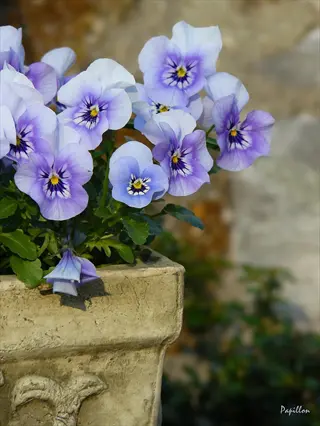
Container Sowing
- Use shallow trays or pots with multiple drainage holes avoiding deep containers that retain excess moisture harmful to seedlings
- Fill with low-fertility mix: combine 70% coarse sand with 30% native soil to replicate natural meadow growing conditions
- Scatter seeds sparsely - approximately 5-7 seeds per 6-inch (15 cm) pot to prevent overcrowding as plants mature
- Place near south-facing windows receiving minimum 6 hours direct sunlight daily or supplement with full-spectrum grow lights
- Rotate containers 90° every two days to ensure even growth patterns and prevent seedlings leaning toward light sources
- Use capillary matting beneath containers to wick moisture upward maintaining consistent hydration without surface disturbance
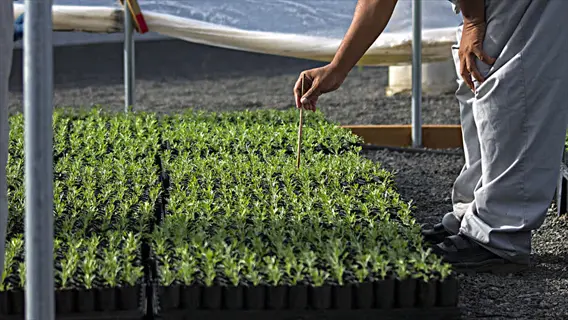
Allotment Scaling
- Calibrate broadcast spreaders to deliver 5g per m² (0.05 oz per ft²) through test runs on measured pavement areas first
- Divide large areas into 10x10 ft (3 m) grids with string and stakes creating manageable sections for quality control
- Use ATV-mounted seeders with fluted metering systems for areas exceeding 1 acre (0.4 ha) ensuring uniform distribution
- Record sowing patterns with GPS mapping to document coverage density enabling precision reseeding of any missed patches
- Employ team planting methods with color-coded flags marking completed zones preventing overlaps or missed sections
- Conduct germination tests on sample plots before full-scale sowing to verify seed viability and soil preparation adequacy
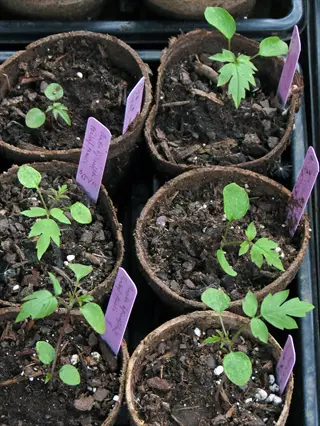
Post-Sowing Care
- Identify weed sprouts using plant identification apps weekly comparing leaf patterns to known wildflower species guides
- Hand-pull intruders when soil is moist after light irrigation gripping at soil level to remove entire roots without disturbance
- Delay mowing until seedlings reach 6-8 inches (15-20 cm) height ensuring sufficient energy storage in root systems
- Mark successful germination zones with non-toxic spray paint for future reference and density evaluation after establishment
- Apply diluted seaweed extract monthly as gentle growth stimulant enhancing root development without encouraging weeds
- Document growth stages with dated photographs creating comparative records to refine techniques for future plantings
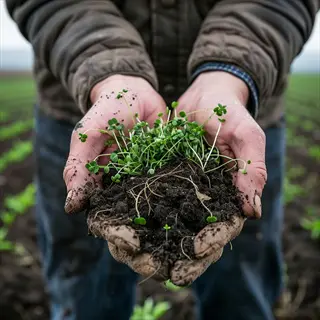
Troubleshooting Failures
- Bare spots: reseed immediately using sand-carrier mix in precise patches matching original sowing density and compression
- Fungal issues: reduce watering frequency immediately and apply cinnamon powder as natural antifungal allowing soil surface to dry
- Poor germination: verify soil temperature exceeds 55°F (13°C) using probe thermometers and delay sowing if below threshold
- Animal damage: install temporary electric fencing at 6-inch (15 cm) height or apply cayenne pepper repellent sprays weekly
- Washed seeds: repair erosion channels first then reseed affected areas using erosion blankets for secondary protection
- Leggy seedlings: increase light exposure immediately or supplement with grow lights positioned 6 inches (15 cm) above plants
Watering and Seasonal Maintenance
New seedlings require constant moisture for the first 6 weeks. I set dawn and dusk reminders to spray with a fine mist nozzle - keep the topsoil damp, like a well-wrung-out sponge. After this transition period, established plants are well-suited to natural rainfall, unless a severe drought occurs.
Mow your meadow once per year, after the first hard frost of autumn. Cut plants to 4 inches tall. I will leave debris on the soil for 2 days so the seeds can fall out naturally. Eventually, I will remove the debris to prevent mold. This timing allows overwintering insects to survive and promotes regrowth in the spring.
Adapt watering to your climate. In arid deserts, you will want to water deeply once every two weeks in the summer - very early in the morning. If living in a humid area, be sure to avoid overhead watering to combat fungal diseases. Coastal gardens can use dew in the mornings, but need to supplement if it is dry. Always check soil moisture before watering.
Use smart methods to keep weeds at bay without using chemicals. Keep a plant height of 3-4 inches to block weed seeds. After the rain, I hand-pull weeds from the field, and the roots easily slip out of the soil. Use competitive natives, such as yellow rattle, to outcompete grasses, Mulch only when it's needed for erosion control on a slope.
Germination Phase
- Maintain consistently damp topsoil (0.5-1 inch / 1.3-2.5 cm) for first 4 weeks
- Water twice daily with fine mist: early morning and late afternoon
- Use rain gauge to ensure 1/4 inch (6 mm) daily moisture without runoff
- Protect seedlings from heavy rain with temporary row covers
Establishment Phase
- Reduce watering to every 2-3 days after seedlings reach 3 inches (7.6 cm)
- Deep soak to 4 inches (10 cm) to encourage root development
- Install drip irrigation or soaker hoses to minimize leaf wetness and disease
- Suspend watering during rainfall exceeding 1/2 inch (13 mm) weekly
Mature Meadow Care
- Water only during droughts exceeding 3 weeks without rain
- Apply 1 inch (2.5 cm) monthly in arid regions to maintain blooms
- Prioritize native species that thrive on natural rainfall patterns
- Use moisture meters to verify soil dryness below 4 inches (10 cm)
Regional Adjustments
- Desert climates: water biweekly June-August at dawn to reduce evaporation
- Humid zones: avoid overhead watering to prevent fungal diseases
- Coastal areas: utilize morning dew cycles; supplement only in dry spells
- Mountain regions: cease watering when temperatures drop below 40°F (4°C)
Container Watering
- Check soil daily: water when top 1 inch (2.5 cm) feels dry
- Use pots with drainage holes to prevent root rot in saucers
- Bottom-watering technique: soak containers in trays for 20 minutes
- Reduce frequency by 50% during cool, cloudy periods
Identification
- Recognize common invaders: bindweed (convolvulus), thistles, and nettles
- Use plant ID apps to distinguish weeds from young wildflowers
- Monitor weekly during first 12 weeks after sowing
Manual Removal
- Pull weeds when soil is moist; grasp at base to remove roots
- Cut taproots 4 inches (10 cm) below soil with dandelion tool
- Dispose of weeds off-site to prevent reseeding
Natural Suppression
- Sow yellow rattle seeds to parasitize aggressive grasses
- Plant dense native groundcovers like creeping thyme for competition
- Apply corn gluten meal in spring to inhibit weed germination
Prevention
- Maintain 3-4 inch (7.6-10 cm) height to shade out weed seeds
- Avoid soil disturbance that brings buried seeds to surface
- Use certified weed-free seed mixes and soil amendments
Regional Challenges
- Arid zones: target invasive succulents like purslane before seeding
- Humid areas: control moss with iron-based organic treatments
- Coastal regions: remove invasive beach grasses in early spring
When to Plant Wildflowers
Spring site planting works best for most areas after the last frost date passes for the area. Once the soil temperature reaches 55°F, I plant my annuals, such as poppies. If you live in cold zones, you can successfully use fall planting and winter chill to naturally prepare your seeds. You may be living in desert areas where planting during the monsoon is ideal for faster germination of varieties.
Use a probe thermometer to check soil temperatures consistently. Perennials like milkweed sprout with soil temperatures at 45°F, and natives barely start with 40°F. I measure at 10 AM at 2 inches deep. Coastal gardeners typically delay 3-4 weeks longer than their inland neighbors because spring temperatures are cooler.
Find your local frost dates using the USDA Zone Map, my Zone 5 garden plants from April 25 to May 15. Calculate by checking the average last spring freeze dates online. Urban heat islands allow me to plant two weeks earlier than in rural areas.
Dormant Seeding is a groundbreaking practice for cold winter gardens. Sow when the ground is frozen solid, usually in late November (or later). I broadcast my seeds over the snow, allowing the meltwater to naturally bury the seeds. This replicates nature's process, providing the seeds with winter stratification to ensure robust spring growth (without the struggle of dealing with muddy, spring soil)
Northeast (Zones 3-7)
- Spring planting: late April to early June after last frost date
- Fall planting: September to October before ground freezes
- Dormant seeding: November after soil drops below 40°F/4°C
- Prioritize cold-hardy species like black-eyed Susan and aster
Southeast (Zones 6-11)
- Spring planting: February to March before summer heat
- Fall planting: October to November for spring blooms
- Avoid summer sowing due to high humidity and disease risk
- Ideal species: blanketflower, coreopsis, and partridge pea
Midwest (Zones 3-7)
- Spring planting: mid-March to May after soil thaws
- Fall planting: September to early November
- Dormant seeding: late November after 2 hard frosts
- Top choices: purple coneflower, milkweed, and prairie clover
West Coast (Zones 6-10)
- Coastal: year-round except winter rains; best in March-April
- Inland: spring (March-May) or fall (October-November)
- Adjust for microclimates: later planting in higher elevations
- Recommended: California poppy, lupine, and globe gilia
Arid Southwest (Zones 6-10)
- Spring planting: February-March after winter rains
- Monsoon planting: July for quick-germinating annuals
- Avoid June heat; use shade cloth for late starters
- Drought-tolerant species: penstemon, desert marigold
Urban Heat Islands
- Plant 2-4 weeks earlier than rural areas due to warmer temps
- Use reflective mulch to reduce soil temperature extremes
- Prioritize heat-tolerant species like blanketflower
Slopes & Elevation
- South-facing: plant 1-2 weeks earlier in spring
- North-facing: delay planting until soil warms sufficiently
- Add 1 week delay per 500 ft (150 m) elevation gain
Coastal Influence
- Plant 3-4 weeks later than inland due to cooler springs
- Use windbreaks to protect seedlings from salt spray
- Choose salt-tolerant species: seaside goldenrod
Wetland Edges
- Delay planting until water recedes in spring
- Use water-tolerant species: blue flag iris, joe-pye weed
- Avoid fall planting in flood-prone areas
Woodland Transition
- Plant shade-tolerant species: wild columbine, trillium
- Time planting with canopy leaf-out (late spring)
- Use soil thermometers to verify consistent 45°F/7°C
Troubleshooting Common Issues
Incorrect soil temperature of depth can be a cause of weak germination. I test old seed by putting ten in a wet paper towel for five days. If fewer than six germinate, ditch them. Surface sow in the sun, as planting too deeply can inhibit sprouting. Keep the soil evenly moist, but not saturated.
Determine pests versus disease by the pattern of damage. Chewed leaves = insect damage (aphids). White powder = fungal problem (mildew). I use a magnifying glass to see tiny bugs or spores, which then tells me whether I want to treat with spray soap or ensure adequate airflow.
When it comes to organic pest control, there are many fundamental tactics to try. For aphids, try spraying diluted soap water. For slugs, use traps with beer. For deer, use lavender border planting or crushed eggshells as a deterrent. I hang reflective tape to deter birds. All of these methods do not harm pollinators and reduce problems.
Adjust for microclimates to reduce stress. In heat islands, add shade cloth during hot afternoons. Frost pockets need frost blankets overnight. Windy spots benefit from woven barriers. I plant native grasses as wind breaks. Solutions need to fit your garden's distinct conditions.
Low Germination Rates
- Verify soil temperature exceeds species minimum (e.g., 55°F/13°C for annuals)
- Test seed viability: place 10 seeds in damp paper towel for 5 days
- Re-sow bare spots mixing seeds with sand for better soil contact
Seed Washout
- Repair erosion channels with jute netting before reseeding
- On slopes: use erosion blankets and straw mulch anchoring
- Create diversion berms uphill to redirect water flow
Fungal Damping-off
- Reduce watering frequency immediately upon spotting mold
- Apply cinnamon powder as natural antifungal to affected areas
- Improve air circulation with gentle fanning for container seedlings
Bird/Insect Predation
- Install reflective tape strips creating flashing deterrent patterns
- Use floating row covers secured with soil staples for protection
- Create decoy feeding stations with cheap seeds away from planting
Soil Crusting
- Gently rake crusted surface with hand fork before reseeding
- Cover with thin vermiculite layer to retain moisture
- Switch to drip irrigation to prevent surface compaction
Heat Stress
- Wilting in temperatures above 90°F/32°C
- Solution: Install 30% shade cloth during peak afternoon hours
- Water deeply at dawn to cool roots
Frost Damage
- Blackened foliage after sudden cold snap
- Solution: Cover with frost cloth overnight
- Trim damaged parts; avoid fertilizing until recovery
Nutrient Deficiency
- Yellow leaves with green veins (iron deficiency)
- Solution: Apply diluted seaweed extract foliar spray
- Avoid synthetic fertilizers; amend soil long-term with compost
Overcrowding
- Sparse blooms; leggy growth competing for light
- Solution: Thin seedlings to 6-8 inch/15-20 cm spacing
- Transplant extras to bare areas with root balls intact
Wind Damage
- Broken stems; desiccated foliage in exposed areas
- Solution: Install woven windbreak fabric on stakes
- Plant sturdy native grasses as permanent buffers
5 Common Myths
Wildflowers are dependent on nutrient-rich soil and regular fertilization to produce many blooms and attract pollinating insects in a home garden space.
Wildflowers are, in fact, suited to low-fertility soil because an abundance of nutrients will facilitate aggressive weeds to defeat them. Fertilizer creates dense grass growth to drown out delicate seedlings, reducing plant biodiversity and blooms. Native wildflowers evolved to grow in recently disturbed, poor soils, and when we naturally enrich the substrate, we break their natural growing cycles and expose them to more competitive conditions leading to shorter life cycles and fewer pollinators. Instead, just expose the soil to drainage and sunlight.
When wildflower seeds are sown deep into the soil, moisture retention is improved and birds are less able to eat them, so germination is improved.
Most wildflower seeds want surface sowing as they require light to germinate; therefore, if you bury seeds deeper than 1/8 inch into the soil, they will not sprout. Seeds may rot in moist soil before being able to develop roots. For at least the first week, when the seeds are exposed for birds to eat, it is better to net them than to bury them. The best technique is to press the seeds down into bare soil, rather than covering them with soil.
Wildflowers may be sown at any time of year, as long as the ground is not frozen or so extremely wet that it is unworkable, offering flexibility for spontaneous gardening projects.
Wildflowers do have specific earthly, seasonal timed requirements related to temperature and moisture seasonal cycles: Spring sowings capitalize on warming soils, when seeds germinate. Fall sowings utilize winter chilling after germination to overcome seed dormancy. Summer sowings take the greatest risk, potentially suffering from heat stress and encountering death from drought, while winter sowings into unfrozen ground may present future problems with germination, followed by frost kill. Timing is a matter of observing your regional frost dates, and the member species for site establishment timing and evolving needs.
All wildflowers attract harmful pests like aphids and deer, increasing garden maintenance and requiring chemical pesticides for protection.
Native wildflowers naturally repel local pests through chemical defenses evolved over centuries, reducing infestation risks without chemicals. Species like lavender, sage, and yarrow emit scents that deter deer and repel aphids while attracting beneficial insects like ladybugs. Chemical pesticides harm pollinators and disrupt ecosystems, whereas diverse native plantings create balanced habitats where pests are controlled naturally by predators.
Although wildflower meadows do not require more work compared to lawn mowing, the need for mowing, watering, and weeding a meadow makes it a high maintenance feature in the landscape.
Once wildflower meadows are established, the maintenance burden is very low: we only mow the meadow once a year in late fall, to spread seeds and discourage woody plants. If the plants are deep-rooted natives, they access groundwater, so there is no need to irrigate after the first year. The amount of weeding required decreases over time, when the natives have the advantage and outcompete the invaders (i.e. when they stop mowing every week). This low-maintenance method is more time-efficient and promotes greater biodiversity and less carbon emissions from mowing or other lawn maintenance.
Conclusion
Successful wildflower gardening is a combination of timing and nature consideration. Your meadow then becomes a biodiversity hotspot supporting bees, butterflies, and birds in a natural habitat. This choice replaces lawn maintenance and the use of chemicals with an abundant display of life. Seasonal flexibility gives you the ability to be successful in deserts, coastlines, or at high elevations.
Every native planting creates ripples beyond aesthetic beauty. Monarch butterflies utilize milkweed nurseries. Bumblebees locate long-lost food sources. I have observed sparrows showing fledglings how to forage in my coneflowers. These tiny sanctuaries stitch together local ecosystems little by little.
This week, get started with your wildflower journey! Prepare one sunny patch using the instructions shared. Sprinkle seeds appropriate for your upcoming seasonal window. Then sit back and watch nature's patient artistry develop. Your first blooms will herald the start of long-term change.
External Sources
Frequently Asked Questions
What is the optimal season for planting wildflowers?
The ideal planting season varies by climate: spring after last frost works best for most regions, while fall planting suits colder zones. Desert areas prefer monsoon season, and coastal climates favor late winter. Always check local frost dates first.
Can wildflowers grow in poor soil conditions?
Wildflowers thrive in low-fertility soils as excessive nutrients encourage weeds. Key requirements are:
- Well-draining soil to prevent root rot
- Minimal organic matter (avoid compost/fertilizers)
- Proper pH balance matching native species
- Full sun exposure for most varieties
How do I protect newly planted seeds from birds?
Use temporary netting suspended above soil for 2-3 weeks. Supplemental methods include:
- Reflective tape strips creating visual deterrents
- Decoy predators like owl statues moved daily
- Sacrificial feeding stations with cheap seeds
- Light straw cover on slopes only
Why aren't my wildflower seeds germinating?
Common causes include incorrect soil temperature, planting depth, or moisture levels. Ensure seeds get direct sunlight, maintain damp topsoil without flooding, and verify viability through paper towel tests before reseeding bare spots.
Do wildflowers need regular watering like gardens?
Only during establishment: keep soil moist for 4-6 weeks. Mature meadows require minimal watering, relying on rainfall except in droughts. Container plantings need more frequent checks but still less than traditional gardens.
How do I control weeds in a wildflower meadow?
Prevent weeds through proper site preparation and maintenance:
- Use stale seedbed technique before planting
- Hand-pull invaders when soil is moist
- Maintain 3-4 inch height to shade weed seeds
- Introduce competitive natives like yellow rattle
Can I plant wildflowers in shady areas?
Most require full sun, but woodland-edge species like columbine tolerate partial shade. Always match species to light conditions: full sun varieties need 6+ hours direct light, while shade-tolerant types manage with filtered light.
How long until wildflowers bloom after planting?
Annuals bloom within 6-8 weeks in spring. Perennials establish roots first year, flowering in year two. Fall-planted seeds germinate after winter, blooming the following spring. Timing varies by species and regional conditions.
Are wildflowers invasive to other garden areas?
Native species rarely invade if chosen carefully. Avoid non-natives like bachelor buttons that spread aggressively. Research plant characteristics through local extensions and always verify seed provenance to prevent ecological disruption.
What maintenance do established wildflower meadows need?
Minimal care includes:
- Annual mowing in late autumn after seed drop
- Spot-reseeding bare patches in spring
- Occasional thinning of overcrowded plants
- Seasonal removal of invasive species only
